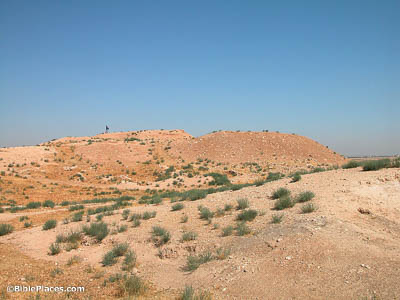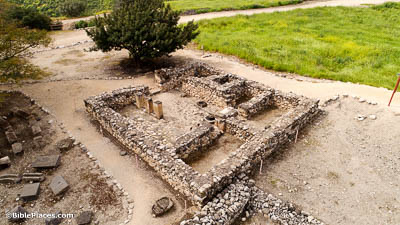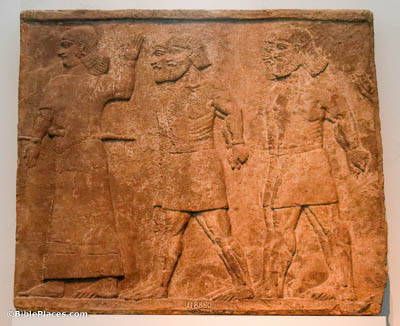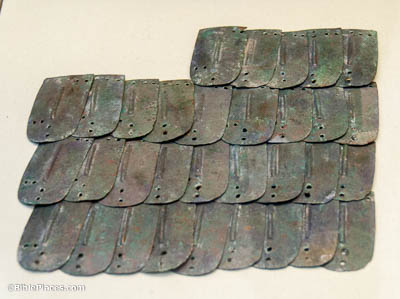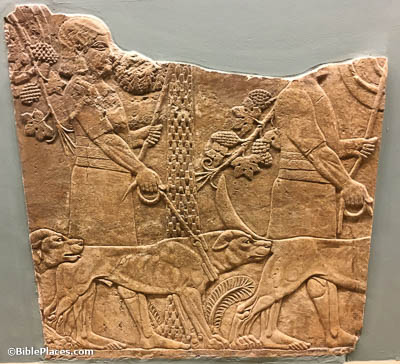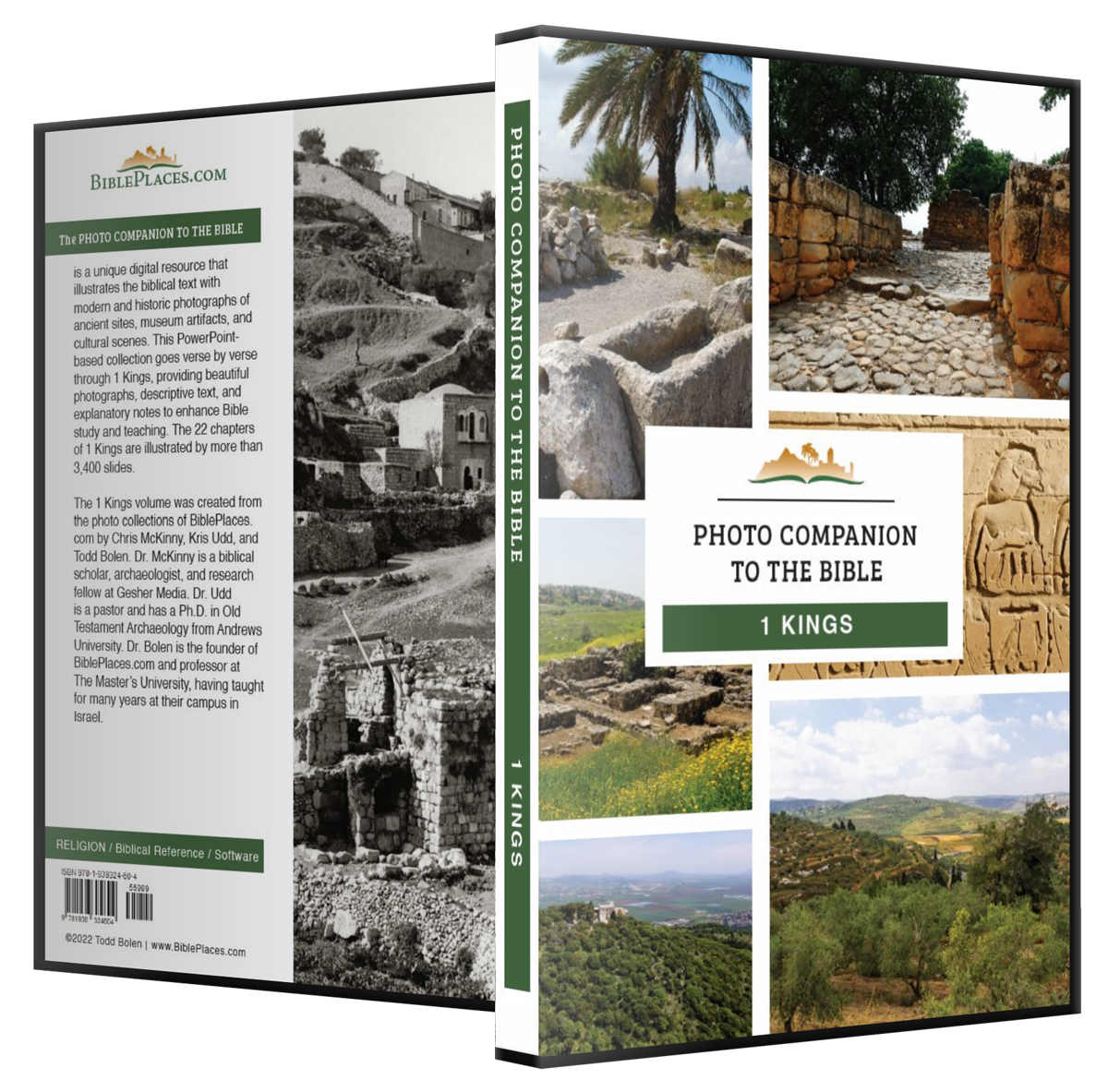“Put this man in the prison and feed him sparingly with bread and water until I return in peace” (1 Kings 22:27).
The concept of imprisonment was not widespread at this time. No provision is made for it in the Mosaic law, and the concept is relatively rare in the Hebrew Bible (cf. Gen 39:20-22; Judg 16:21-25). An interesting reference appears later in Jeremiah 44:15, where Jeremiah was confined to “the house of fetters in the house of Jonathan the scribe, which they had made into a prison.” This may indicate that even in later centuries there were not purpose-built prisons, and any such need was fulfilled by a temporarily designated space. This seems to be borne out by the fact that, to date, no structure of the Iron Age (or earlier) has been found that could be identified as a prison. By contrast, depictions of prisoners of war are quite common. This relief of prisoners with their hands bound behind them comes from the Central Palace of Tiglath-pileser III at Nimrud.
